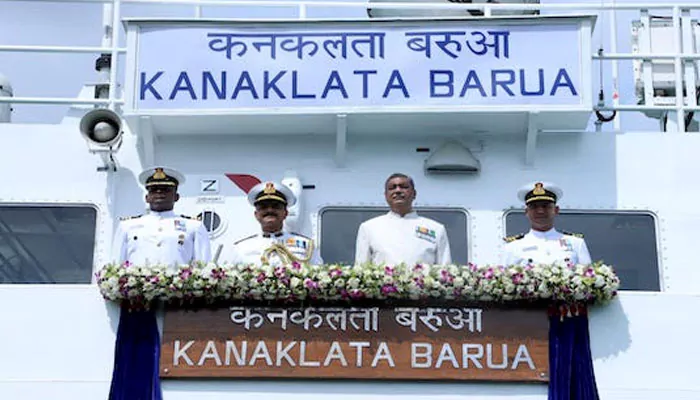
At just seventeen, Kanaklata Barua carried the national flag into the face of bullets—so that a free India could rise behind her sacrifice
She wasn't a soldier. She didn't wear a uniform. She didn't carry a weapon. But she walked with a flag in her hand and fire in her soul. In the remote village of Assam, a 17-year-old girl named Kanaklata Barua stepped into history with nothing but courage to shield her. It was 1942. The Quit India Movement had set the country ablaze. Everywhere, ordinary Indians were rising. And in Gohpur, Kanaklata prepared for her final march.
What followed was not just an act of bravery. It was a teenage girl's answer to the empire, a quiet rebellion that thundered through time.
By 1942, India's struggle for independence had reached a boiling point. The Quit India Movement, led by Mahatma Gandhi, called upon every Indian to rise. "Do or Die" was the slogan. In Assam, students and youth groups formed to resist British rule. One of them was the Mrityu Bahini, a group prepared to face death for the country.
Kanaklata, though just 17, wanted to join. The group's rule was strict: only those above 18 were allowed. But her resolve moved the leaders. She was welcomed in, and not just as a member but as a leader of the women's wing.
On 20 September 1942, the sky was heavy, but the spirit was high. Kanaklata, draped in a simple mekhela sador, held the Indian flag in her hands. She and hundreds of volunteers began a peaceful march towards the Gohpur Police Station—their goal: to hoist the Indian flag on British soil.
Police tried to stop them. Warnings were shouted. Guns were raised. But Kanaklata stood firm. "I will do my duty," she said calmly. "You do yours." And she walked ahead with the flag held high.
As she reached the gate, a shot rang out. Then another. Kanaklata was hit in the chest. Blood flowed. But her grip on the flag did not loosen. She fell, but the flag did not touch the ground. Another young man, Mukunda Kakoti, rushed forward to take it from her hands. He, too, was shot.
They died, but the mission lived on. Later that night, their fellow protestors hoisted the flag at the police station. The tricolour flew—not just on the pole, but in every heart that knew their story.
Kanaklata became a symbol of resistance in Assam. People called her Birangana—the brave heroine. Statues of her now stand in places like Tezpur and Gauripur. A park was named after her. Schools teach her story. Children remember her every year on her martyrdom day.
In her short life, she showed how youth, even with no weapons, can bring a mighty empire to its knees.
In 2020, the Indian Coast Guard named a patrol vessel after her—ICGS Kanaklata Barua. It now guards India's waters, a moving tribute to the girl who once guarded the nation's soul.
Her story also found space on the big screen. A regional film, Epaah Phulil Epaah Xoril, captured her journey and sacrifice. Through cinema, her courage reached newer generations.

Kanaklata was not just a girl with a flag. She was an idea - of standing tall, not waiting to be asked, and doing what's right. Her story reminds us that courage has no age and patriotism doesn't need permission. At 17, she sacrificed her life so that future generations could live freely. She didn't drop the flag when she fell. And in doing so, she ensured that India would never let it fall again.